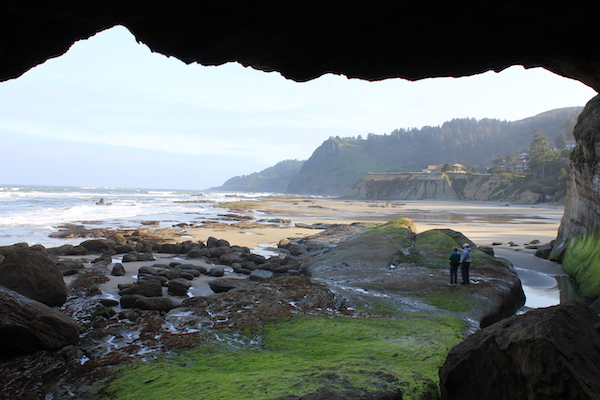
05.14.20
Ocean Advisory Council Approves New Process for Protecting Special Places
By Charlie PlybonLast week, Oregon's Ocean Policy Advisory Council (OPAC) unanimously approved a new process that allows for the public to put forth proposals to amend existing or add new protections to rocky habitats in Oregon's ocean. Through special designations known as Research Reserves, Marine Gardens and Marine Conservation Areas, the public will be able to create proposals using a newly developed online mapping and inventory tool. The tool allows individuals and groups to select an area of the nearshore ocean to evaluate nearshore resources, communicate with stakeholders, resource managers and local and state government and ultimately create and submit their proposal. The process is set to launch in June of this year, with initial proposals to be vetted in early 2021 and following on an annual basis through OPAC.
 Otter Rock Marine Garden. The new process will allow for special areas like this to be proposed as new or amended
Otter Rock Marine Garden. The new process will allow for special areas like this to be proposed as new or amended
The Council's decision follows a lengthy, 3-year OPAC Working Group process to update and amend Part III of Oregon's Territorial Sea Plan. This part of the plan outlines a strategy for how Oregon's rocky ocean habitats are to be managed, describes the important uses of these habitats, lays out policies and protections and provides for special designations like Marine Gardens, Research Reserves and Marine Conservation Areas. Surfrider is helping to lead this important process for Oregon's ocean through chairing the Working Group, which you can learn more about on Surfrider's site here or on the state of Oregon's official ocean policy site here.
For Surfrider, ocean recreational users have a high interest in these rocky habitats, particularly the ones along the shoreline that many of us have come to know and love as simply tidepools. Other submerged rocky habitat can provide for a range of important recreational uses to Oregonians and our membership from important rocky reef surf breaks to diving and recreational fishing, these special areas in Oregon's waters are vitally important. Given the importance of the process and these special places, in addition to our support of the Working Group's process, our broader membership and Chapters' in Oregon have developed a vision and framework to help guide our local engagement in the proposal process - read it here.
 Rockfish and other commercially and recreationally important fish and invertebrate species depend upon rocky habitats
Rockfish and other commercially and recreationally important fish and invertebrate species depend upon rocky habitats
The Rocky Habitat Management Strategy is the full text for Part III of the Territorial Sea Plan. All strategy components including goals and objectives, policies, coordination of management, uses and special designations are described within this document.
The Rocky Habitat Mapping Tool is new and being utilized for this planning process through a platform known as SeaSketch. There is a really handy user guide here for using this tool. This is designed to help individuals, groups and various entities to both plan and submit proposals for rocky habitat designations. 


